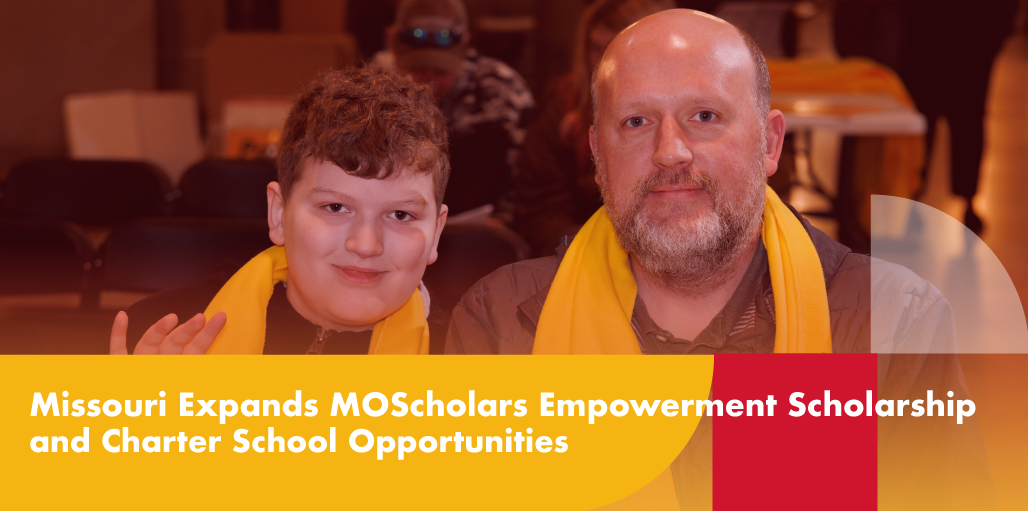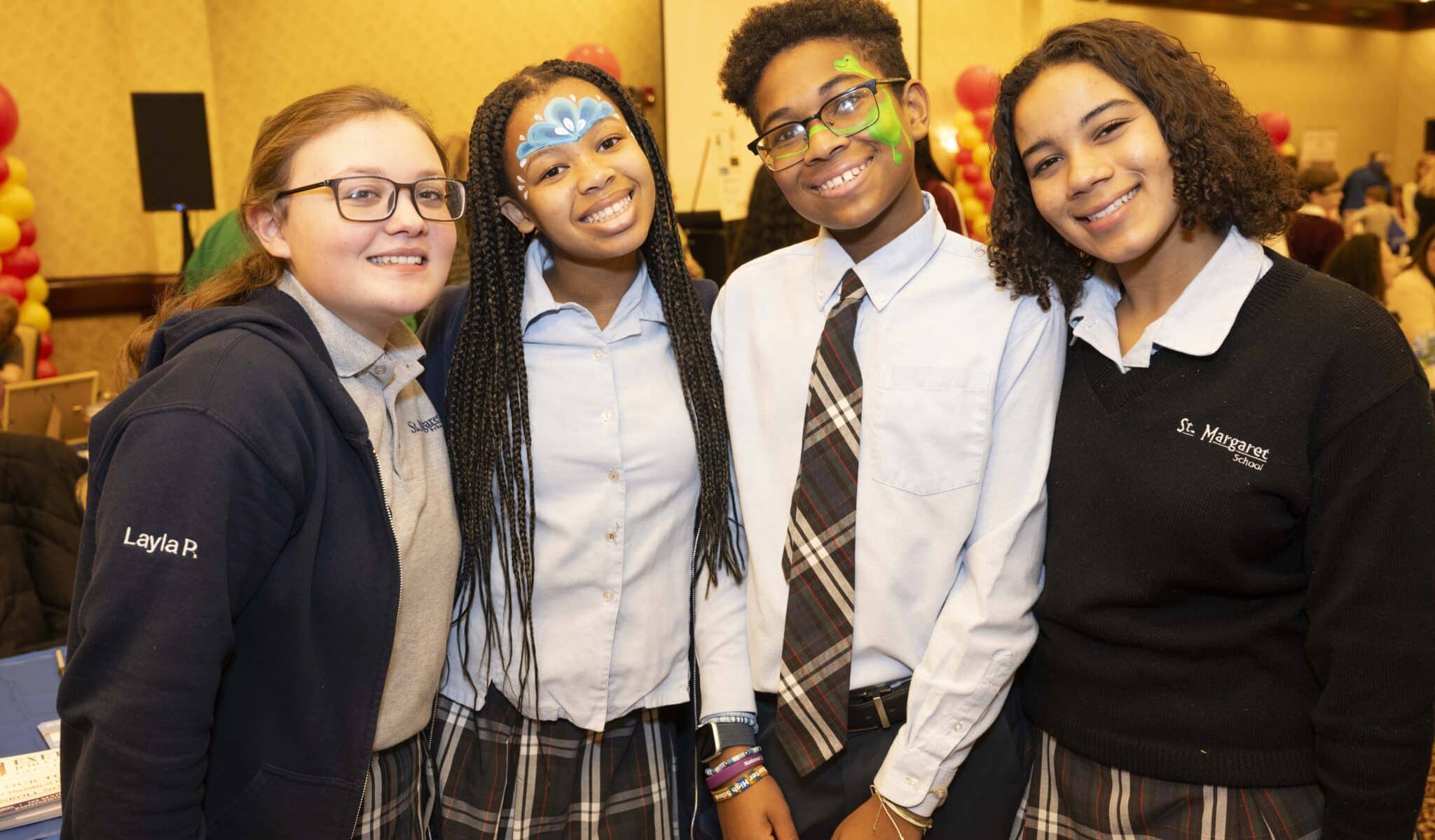Posted on Modified on Posted by National School Choice Week Team
Missouri Expands MOScholars Empowerment Scholarship and Charter School Opportunities

New educational opportunities for K-12 students in the Show Me state are on the horizon! Thanks to SB 727, a 176-page bill signed into law, more families across Missouri will soon have access to the MOScholars Empowerment program and public charter school opportunities than ever before. Let’s explore what this means for families statewide.

What is the MOScholars Empowerment Scholarship Program?
Missouri’s MOScholars Empowerment Scholarship Program launched in 2021 to provide flexible scholarship funds for children with Individualized Education Program (IEP)s and children from low-income households. Families who participate in the program receive scholarship funds, funded by tax-credit donations, from businesses or individuals, in education savings accounts (ESAs). Families can apply their ESA funds to tuition at eligible public (for transportation, open enrollment price differences, or extracurricular activities), private, and online schools, as well as educational expenses like tutoring, educational therapies, individual classes, at home learning, and extracurricular programs.
What’s changing about the MOScholars program?
Since 2021, the MOScholars program has served over 1,000 students, but the program has only been open to families in certain geographic areas. Now, lawmakers have expanded eligibility for the scholarship program statewide. Starting in 2025, no matter what school district you live in, you may be eligible to apply if your child has an IEP or you meet the income requirements.
Not only is the program expanding geographically, it’s also expanding in terms of income eligibility. Previously, only students whose families earned less than 200% of the federal free-and-reduced-price lunch rate were eligible for the program. The eligibility level has been raised to 300% of the free-and-reduced-price lunch rate (about $90,000 for a family of four), opening the doors for many more low and middle-income families to apply.
In order to serve the additional families who can now apply, the total amount of tax credits that can be dedicated to the MOScholars program is dramatically increasing to $75 million. With the expanded funding cap, the program could potentially fund ESAs for about 4,000 more students!
In addition, the scholarship amount for students qualifying for free and reduced lunch, students with an IEP, and English language learners is increasing.
Plus, the bill now prioritizes siblings of current scholarship recipients, ensuring that qualified siblings have a better chance of receiving the scholarship before new recipients are considered.
For families who educate at home, the bill makes an important update: It introduces a new designation called Family Paced Education (FPE). This carves out a new category for families who use their education savings accounts to educate their children at home. It distinguishes such families from traditional homeschoolers by labeling such families as ‘Family Paced Education’ schools meaning that they actively participate in the MOScholars Empowerment Scholarship Account Program and meet certain teaching standards.
While making these big changes to eligibility, some aspects of the program remain the same. For example, to be eligible to apply, students must have been enrolled in a public school for at least one semester during the last 12 months or just starting kindergarten or first grade.
What are eligible educational expenses for the MOScholars program?
Missouri’s MOScholars can be used for more than 10 different uses! Some of these eligible expenses include:
- Tuition and fees;
- Textbooks;
- Educational therapies like behavioral or speech-language therapy;
- Tutoring services;
- Curriculum;
- Fees for a nationally standardized norm-referenced achievement test, advanced placement examinations, international baccalaureate examinations, or any examinations related to college or university admission;
- Services provided by a public school include, but are not limited to, individual classes and extracurricular programs;
- Educational technology;
- Fees for summer education programs and specialized after-school education programs;
- Transportation costs to education service providers.
How can families apply for the MOScholars program?
Families interested in participating in the MOScholars Empowerment program should first identify and contact a certified educational assistance organization (EAO) partnering with the school the student wishes to attend. A list of accredited EAOs can be found on the Missouri Treasurer’s website.
Once contacted, the EAO will have you complete eligibility prescreening. Once screened and accepted, parents will receive access to the MOScholars student application.
It’s important to note that completing the application will require you to submit verification documents. These documents include proof of identity, Individualized Education Plan documentation, financial documentation/proof of income, proof of attendance at a public school, proof of residency, and homeschool certification (if you are planning to or have already homeschooled).
It’s good to note that students participating in the MOScholar program, whether they choose a private school or homeschool, must take a standardized assessment, a nationally norm-referenced achievement test, or a nationally recognized aptitude assessment.
What else is changing?
Charter school expansion
Besides expanding the MOScholar Empowerment Program, the bill also grows public charter school opportunities. The bill expands the geographic area in which charter schools can be established, increasing the educational opportunities available to a broader range of students.
Currently, Missouri has charter schools only in the St. Louis and Kansas City areas, with more than 60 charter schools between the two cities alone. The bill specifies that counties with 150,000 to 200,000 inhabitants may open charter schools. As of now, Boone County is the only county in Missouri that falls within this range. However, stay tuned for more public charter school opportunities in the future!
Elementary Literacy Fund
K-5 students attending eligible traditional public and public charter schools may soon receive books mailed to their homes as part of an at-home reading program. This program is designed to improve student literacy and academic performance. What will this program look like? The “Elementary Literacy Fund” will provide grants to school districts and public charter schools for the home reading program. The schools will then send books and reading resources to eligible families’ homes according to the student’s selected reading level.
Public school changes
Also, the policy gives parents in larger communities more of a say when it comes to school schedules at traditional public schools. School districts in some suburban and urban communities will now be required to seek parental endorsement through a voting process to transition to a four-day school week. Meanwhile, in smaller, rural districts, students will benefit from increases to the Small Schools Grant.
Where can I learn more?
As you can see, Missouri’s recent education bill will have a far-reaching impact, helping more low-income students afford private schools, supporting more students with IEPs in accessing educational therapy, and paving the way for new charter schools. Alongside the notable scholarship and charter school expansions, the bill includes significant changes for public school students and teachers too, from the at-home reading program to raising educator pay.
Around the United States, more than 300,000 students benefit from ESAs to personalize their education. Although Missouri’s ESA program is not universal like those in states such as Arizona, Florida, and Utah, this year’s expansion to the MOScholars Program is a significant step, affecting thousands of families in the Show Me State!
Families can visit the Missouri Department of Elementary & Secondary Education and the Children’s Education Alliance of Missouri to learn more.
